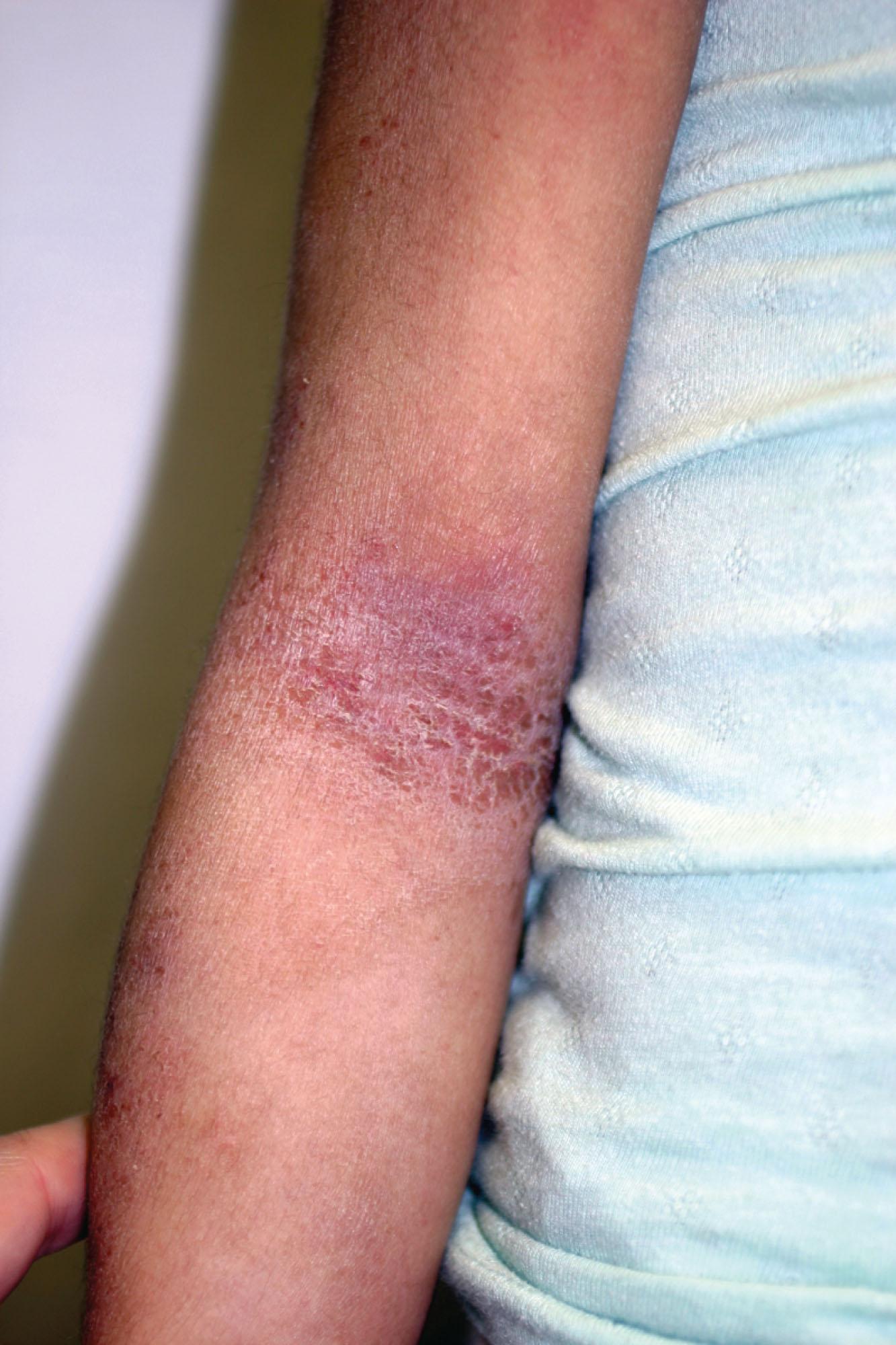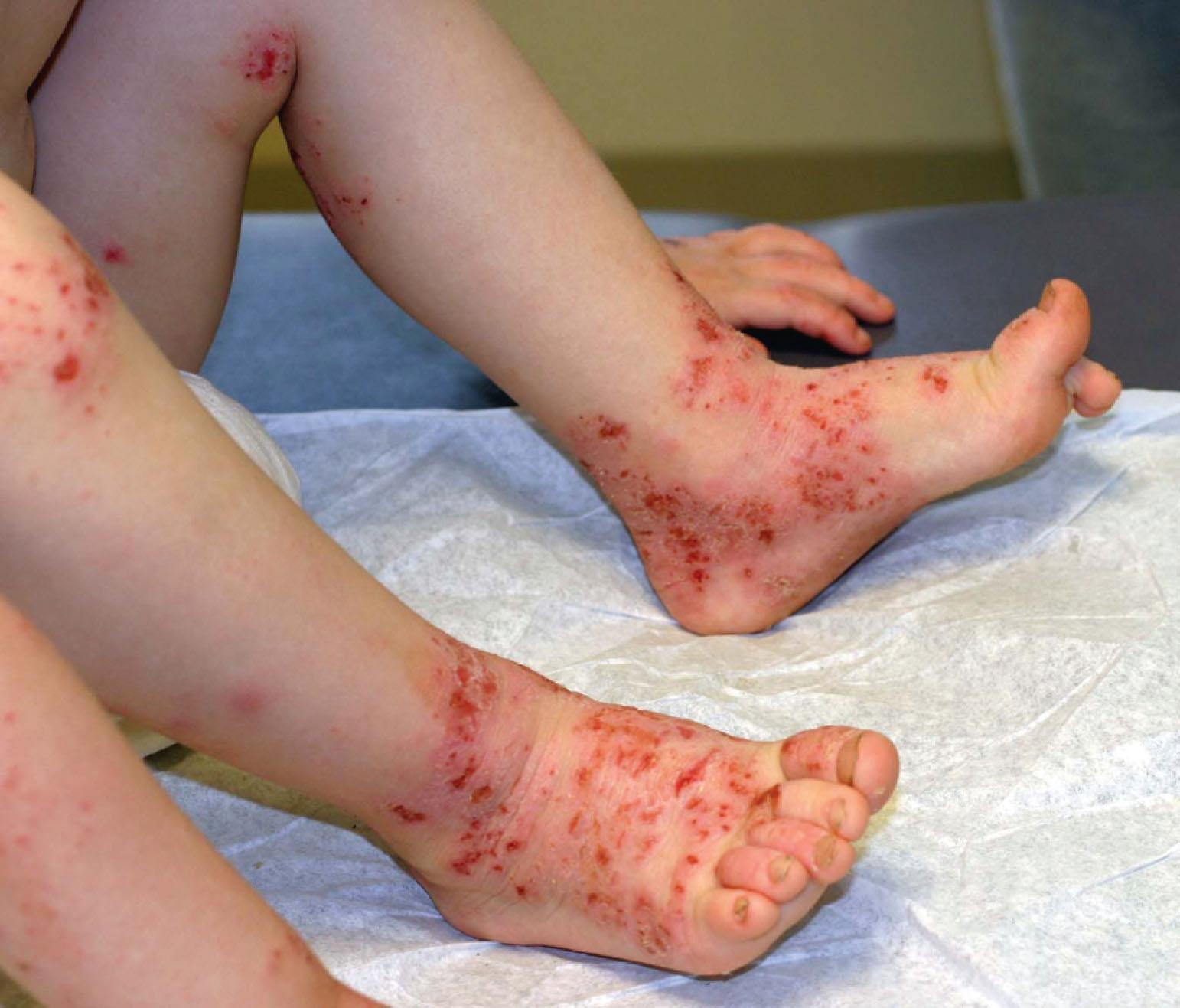Physical Address
304 North Cardinal St.
Dorchester Center, MA 02124
Atopic dermatitis is a chronic inflammatory disease with no known cure. It is associated with significant psychosocial morbidity and decreased health-related quality of life. For many affected individuals, atopic dermatitis is the skin manifestation of atopy accompanied by asthma and allergic rhinitis.
Atopic dermatitis manifests with a defective skin barrier, reduced innate immune responses, and exaggerated immune responses to allergens and microbes. Both genetic predisposition and environmental factors play a role in the development of atopic dermatitis. Genes associated with skin barrier dysfunction and inflammation have been linked with atopic dermatitis. Inflammatory mediators involved include predominantly T helper (T H ) cells, with the T H 2 pathway implicated early in acute lesions and a T H 1 predominance found in chronic lesions. Langerhans cells, immunoglobulin E (IgE), and eosinophils play a prominent role, as well as many other inflammatory mediators. Environmental and contact allergens, infections, irritants, extremes of temperature, sweat, and lack of humidity can exacerbate the condition, as can scratching or rubbing. Triggers are somewhat variable from individual to individual.
Atopic dermatitis is the most common skin disease in children, with an estimated prevalence of up to 20% of children. Only 1–2% of adults manifest disease. In addition to genetic factors, an environmental influence contributes. Atopic dermatitis occurs more frequently in non-White children, urban areas, and higher socioeconomic classes. Prevalence is lower in areas where industrial pollution is less and where eosinophil-mediated infections such as helminthic infections are endemic.
Patients generally have a family history of atopy. Children with atopic dermatitis are predisposed to the development of asthma and allergic rhinitis, referred to as the atopic march . Asthma develops in up to half of children with atopic dermatitis, and allergic rhinitis develops even more frequently. Food allergies are commonly present in children with atopic dermatitis but are a rare cause of atopic dermatitis itself.
Atopic dermatitis is a chronic, relapsing skin disease characterized by xerosis, pruritus, and characteristic skin findings. The condition generally improves with age and remits in adulthood, although some childhood cases will continue into adulthood.
Characteristic lesions of atopic dermatitis are erythematous papules or plaques with ill-defined borders and overlying scale or hyperkeratosis. Weeping may be present in acute stages, which then develops into yellow crust. Lesions can be secondarily excoriated and result in hemorrhagic crusting and lichenification in older lesions. Formation of fissures is common in both acute and chronic lesions. Temporary hypo- and hyperpigmentation can be seen after lesions resolve, but atopic dermatitis is not usually scarring unless secondary features become severe (e.g., infection or scratching).
Characteristic locations vary with the age of the patient. Infantile atopic dermatitis typically affects the face and extensor surfaces of the extremities and is often generalized. Childhood lesions predominate in flexural surfaces (antecubital and popliteal fossae), wrists, ankles, hands, and feet ( Fig. 190.1 ). The adult phase occurs after puberty and manifests in the flexural areas, including the neck, as well as predominant involvement on the face, hands, fingers, toes, and upper arms and back.

Secondary bacterial infection, most commonly with Staphylococcus aureus or less commonly with Streptococcus pyogenes , is frequently present. Patients can develop disseminated skin infections with viruses such as herpes simplex virus (HSV; eczema herpeticum), varicella-zoster virus, coxsackievirus (eczema coxsackium), smallpox virus (eczema vaccinatum), and molluscum contagiosum. Atopic skin is more susceptible to fungal infections as well. Signs of concomitant infection include acute worsening of disease in an otherwise well-controlled patient, resistance to standard therapy, fever, and presence of pustules, fissures, punched out erosions, or exudative or crusted lesions ( Fig. 190.2 ). Eczema herpeticum and eczema vaccinatum can be life threatening if not treated.

Become a Clinical Tree membership for Full access and enjoy Unlimited articles
If you are a member. Log in here